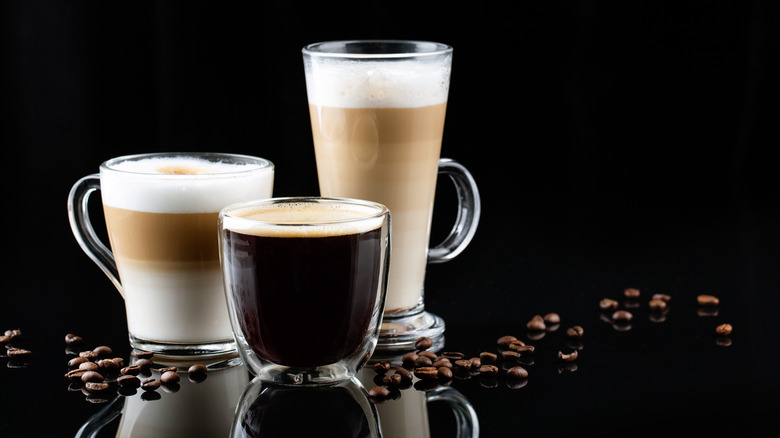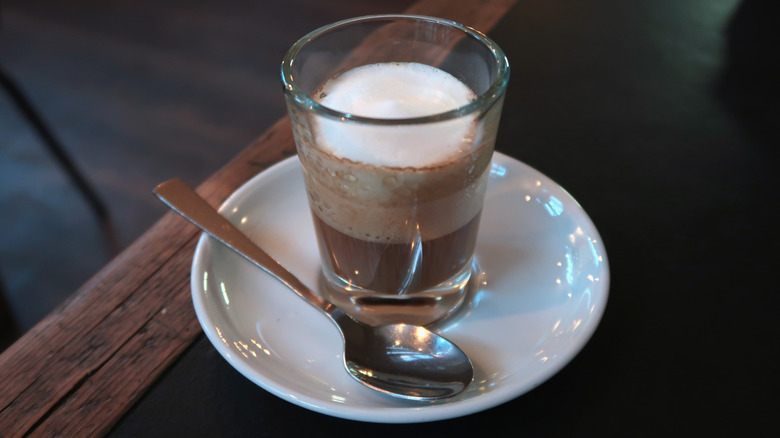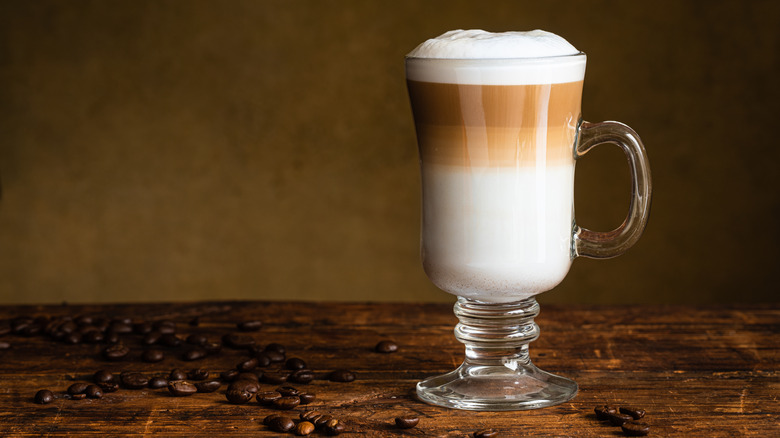How Does A Latte Macchiato Differ From An Espresso Macchiato?
Part of coffee's beauty is its diversity. With different origins, roasts, and preparations, there's endless potential for variability. Sometimes selecting a brew may seem overwhelming, so start with a simple question — with or without milk?
While Italian in name, milk-based coffees were first popularized in other European locales. The tasty combination is accredited to Dutch ambassador Nieuhof in 1660, who observed Chinese royalty drinking milk tea and decided to try the same with a cup of joe. The preparation entered a commercial setting by way of Polish barista Jerzy Franciszek Kulczycki, who first served milk-based drinks at a café in Vienna in 1684.
The Austrian capital went on to innovate the kapuziner, which later spread to Italy in the 20th century and became known as a cappuccino. The macchiato variation followed a few decades later, only first emerging in the 1980s. And nowadays, this beverage encompasses perhaps the most variability of any style. Ask a barista what it means — and the only dependable answer is an espresso topped with milk. While often characterized as the espresso drink with the least amount of milk, it also encompasses deviations like the latte macchiato. So let's dive into the two popular renditions; what are the differences?
What is an espresso macchiato?
Most often, a macchiato order is interchangeable with an espresso macchiato — the first version of the drink. It comes served in a demitasse, a small cup that holds around two to three fluid ounces. It's typically prepared with a single shot of espresso, that's then topped with a couple of teaspoons of foam. In fact, the Italian name macchiato translates to stained, referring to just the dollop of milk that's combined with the coffee.
Nowadays, many specialty coffee shops, especially in the U.S., serve espresso macchiatos with two shots. Of all milk-based coffees, the drink is the best to enjoy the flavor and finesse of a pulled espresso. Not only full-bodied in taste, but it's also the most prone to showcase any inconsistencies in the coffee. As a result, a well-crafted espresso macchiato is a true testament to a barista's skill.
As with many creations in the coffee world, the drink is subject to a multitude of regional variations and barista deviations. Order a macchiato in Australia, and you'll be served a shot in a large glass with only a dash of textured milk. Meanwhile, in North America, a macchiato will still arrive in an espresso cup but will contain closer to one to one ratio of milk to coffee.
What is a latte macchiato?
Craving a little more milk? Specify your order as a latte macchiato to receive a drink more akin to a cappuccino than an espresso macchiato. Served in a tall glass, this milkier macchiato stands apart from other coffees by how it's prepared. Unlike a latte, milk is steamed and added to a glass first, and then pulled espresso is added on top.
The resultant drink is layered rather than stirred and comes with a coffee stain called a macchia on top — hence its affiliation with the macchiato name. Rather than topping espresso with a dollop of milk in an espresso macchiato, this creation reverses the components by topping a milk base with coffee.
In comparison to a latte, latte macchiato sips are more coffee-heavy since the beverage isn't as blended. And additional flavors are common — largely thanks to Starbucks which popularized the drink in the U.S. So whether it's caramel or iced macchiato, the variations continue even within this particular distinction. Such is the beauty of coffee; the possibilities are endless, and there are many mornings to explore.


